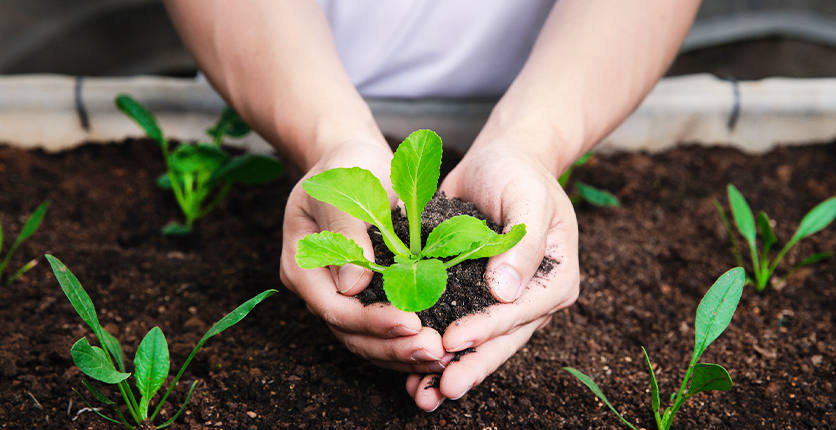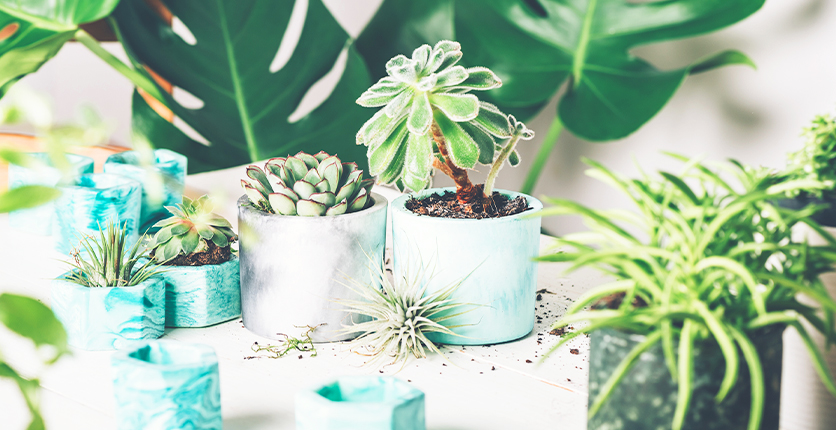Did the plant growing trend brought about by the pandemic not take root with you? Maybe nurturing greens for your family’s enjoyment is more your cup of tea. Or you’ve received your seed packet from NParks’ recent seed distribution exercise for the Gardening with Edibles programme, and need a guide to get started. We speak to Faith Foo, founder of The Living Centre, on the best types of edible plants to grow at home, and tips on how to harvest them.
1. What kind of edible plants are healthy to eat and easy to grow at home?
Faith: Many leafy greens are good sources of many nutrients, including vitamins A and C, magnesium, calcium, iron and potassium.
For gardeners who have little or no experience in growing edible plants, we recommend growing heat tolerant leafy greens like kangkong, bayam (Chinese spinach) and kailan (Chinese kale), which grow well in Singapore’s climate conditions.
Did you know that 1 cup (98g) of boiled kangkong can provide you with 254.80 mcg of vitamin A, which is 34% of the Recommended Dietary Allowances (RDA) for an average adult?

2. Do I need a garden, or can I grow these in pots?
Faith: Beginners can always start in any location with adequate light conditions. This can be your balcony, a window sill or your garden yard. Starting them in pots will be more manageable for beginners, and a recommended pot height of about 12 to 15 cm will be sufficient for leafy greens. Most leafy vegetables will grow very well with about 5 hours of direct sunlight daily.
3. Do these plants need lots of maintenance and sunlight?
Faith: Kangkong, bayam and kai lan need less maintenance as compared to other edible fruiting and flowering plants, but they still require some basic level of maintenance like watering and scheduled fertilising,
They will need watering with dechlorinated water at least once a day and application of organic fertiliser once every two weeks.
Dechlorinated water – Simply place your tap water in your watering can overnight as this will allow most of the chlorine to dissipate into the air. Using dechlorinated water helps support the maintenance and growth of beneficial bacteria and fungi for a balance soil.
When the weather turns very warm, you will need to water up to twice a day.
Organic fertiliser – The most commonly used organic fertilisers are sheep, goat or chicken manure. They are processed by manufacturers in pellet form for easier application. Do note that chicken manure can produce a strong smell when applied to your garden. If you are concern about feedback from your family members or neighbours, you may want to use sheep or goat manure instead.
Never use raw or fresh manure from animals or pets, as they can contain harmful animal pathogens.
Incorporate organic matter – To support a healthy soil, place about 2 to 3 cm of compost on the surface of the soil in the pot every 4 weeks.

4. What if my house doesn’t get direct sunlight?
Faith: We have tested some locations with about 12 hours of indirect sunlight with our scientific instruments, and they have come quite close to having the equivalent of 5 hours of direct sunlight. But if you only have a few hours of indirect sunlight, we recommend that you install a good quality LED grow light. They will be able to provide the correct light spectrum, and sufficient amount of light intensity.
One of the best visual indicators is to look at your leafy vegetables – if they look weak and spindly, it is a strong indicator of insufficient light conditions.
5. What supplies do I need to start with for leafy vegetables?
Faith: You need the following:
- Good quality potting soil that has sufficient drainage
- Organic fertiliser
- Compost
- Seeds
- Growing container that is 12 to 15 cm tall
- Watering can
- Dechlorinated water
6. How soon can I enjoy the fruits of my labour?
Faith: You can harvest your kangkong around day 21 to 26; xiao bai cai, from day 32 to 35, and kailan, about day 40 to 45.

Q: Do I need to replant every time I harvest?
Faith: For most leafy greens, we recommend that you start a new batch from seeds every 2 weeks for a more successive harvest. For some plants like kangkong, you can cut off about 5cm from the top of the soil to allow the plant to push out new growth.
Q: Is there anything about preparing these plants for consumption that I should be mindful of?
Faith: When you harvest, remove the roots and wash the plants to remove any soil or dust thoroughly before you process or cook them.
 About Faith Foo
About Faith Foo
Faith founded The Living Centre in 2015, with core beliefs in holistic living based on two fundamental aspects of Human Health: Nutritional Health from growing and consuming great quality agricultural crops, and Emotional Health through emotional wellness and balance. She is professionally trained in Nutritional Farming in Australia and High Tech Farming from the Netherlands (HAS University of Applied Sciences).
The Living Centre conducts training in urban farming for both Commercial and Home Growers. For more information on their training courses and SkillsFuture supported programmes, go to thelivingcentre.sg
Have you ever grown edible plants? Share your experience with us at magnsman@sph.com.sg!









